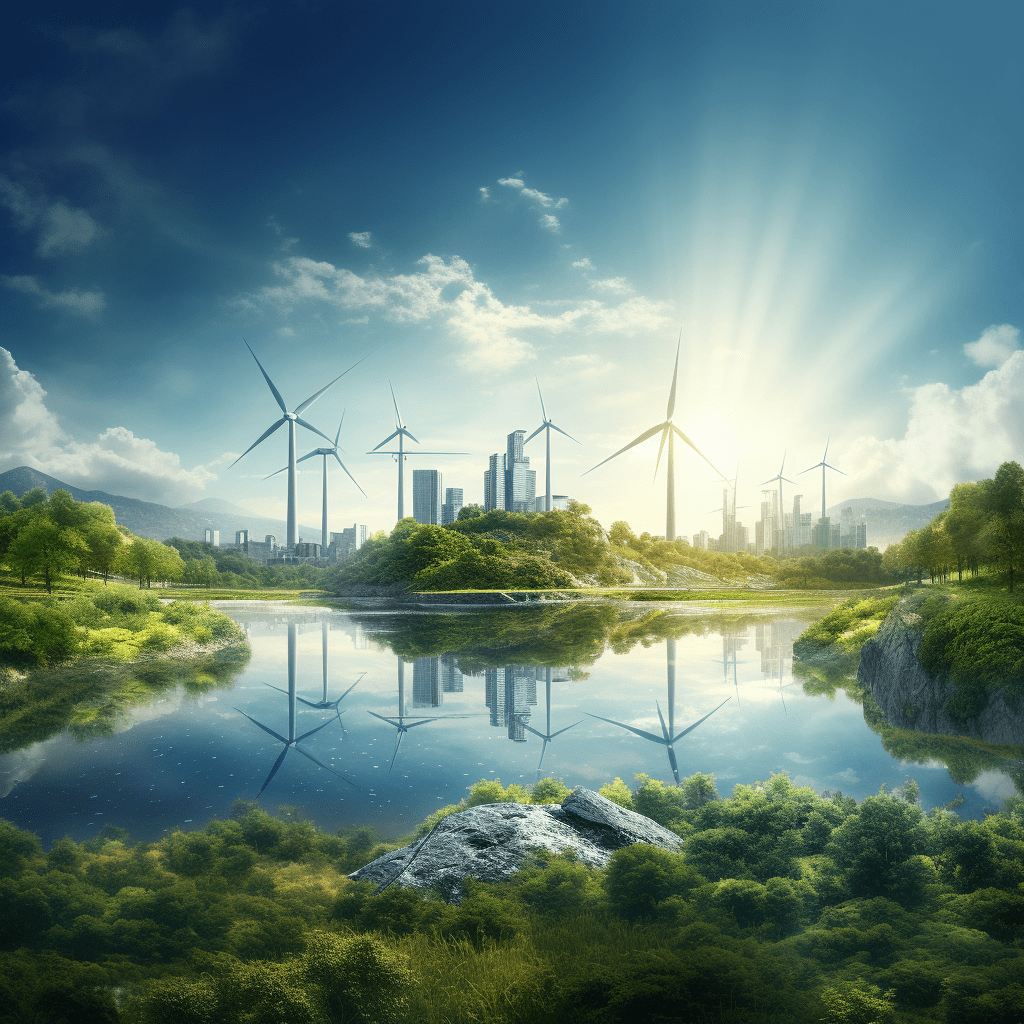Wind power is rapidly becoming one of the most cost-effective and expanding sources of electricity in the United States, generating enough energy to power over 43 million homes. This growth is driven by technological advancements, supportive government policies, and increasing investments in renewable energy infrastructure.
How are Wind Power Costs Evolving in the US?
The levelized cost of energy (LCOE) for land-based wind has significantly decreased over the past decade, falling to around $32 per megawatt-hour (MWh). This reduction can be attributed to larger turbine sizes and improved efficiency in wind farm operations, which have enhanced energy output while lowering costs. However, offshore wind projects face rising costs due to inflation and supply chain challenges, with LCOE for these projects increasing to approximately $114 per MWh.Chart: Historical Trends in LCOE for Land-Based vs Offshore Wind
| Year | Land-Based Wind LCOE ($/MWh) | Offshore Wind LCOE ($/MWh) |
|---|---|---|
| 2012 | 80 | 200 |
| 2022 | 32 | 76 |
| 2023 | N/A | 114 |
What Technological Innovations are Driving Wind Energy Expansion?
Innovative technologies are unlocking new potential for wind energy across the United States. Recent studies suggest that advancements could increase economically viable wind energy capacity by up to 80% by 2025. Key innovations include:
- Taller Turbines: New turbine designs allow for greater heights, enabling access to stronger winds.
- Novel Manufacturing Techniques: Methods like spiral welding and 3D printing reduce production costs and logistical challenges.
- Wake Steering Technology: This allows turbines to adjust their positioning to optimize energy capture without negatively impacting neighboring turbines.
Chart: Potential Increase in Economically Viable Wind Capacity by Region
| Region | Current Capacity (GW) | Potential Increase (GW) |
|---|---|---|
| Southeast | 1 | 5 |
| Gulf Coast | 0.5 | 4 |
| East Coast | 3 | 6 |
Why is the US Wind Power Sector Projected for Strong Growth?
The U.S. Department of Energy projects robust growth in wind energy capacity due to favorable policies and increased domestic manufacturing. Recent legislation has spurred investments, leading to a projected increase of nearly 60% in land-based wind capacity by 2026, with new manufacturing facilities being established across the country. The average size of newly installed turbines continues to grow, enhancing their efficiency and output.
How Does Wind Power Contribute to Clean Energy Goals?
Wind power plays a crucial role in achieving U.S. clean energy targets, contributing about 10% of total electricity generation as of 2023. With ambitious goals set by state governments and federal initiatives aiming for significant increases in renewable capacity, wind energy is positioned as a cornerstone of this transition.
What are the Challenges Facing Wind Power Development?
Despite its growth potential, the wind power sector faces several challenges:
- Cost Pressures: Rising materials and labor costs threaten project viability.
- Regulatory Hurdles: Long permitting processes can delay project initiation.
- Grid Connection Issues: Integrating new wind farms into existing grids remains complex.
These challenges necessitate collaborative efforts between government and industry stakeholders to create sustainable solutions.
How is Government Policy Influencing Wind Energy Growth?
Government initiatives play a pivotal role in shaping the future of wind energy. Policies such as tax incentives and subsidies for renewable energy projects encourage investment and innovation within the sector. Additionally, state-level commitments to renewable energy targets drive demand for wind power development.
What is the Future Outlook for Wind Power in the US?
The outlook for wind power remains optimistic, with projections indicating continued growth driven by technological advancements and supportive policies. As more states commit to renewable energy goals, wind power’s share of electricity generation is expected to rise significantly over the coming years.
Latest News
Recent developments highlight both challenges and advancements in the wind power sector:
- Cost Pressures: Several offshore wind projects face delays due to rising costs and renegotiation of contracts, putting state targets at risk.
- Technological Innovations: New studies indicate that innovative technologies could unlock substantial additional capacity for wind energy across various regions.
- Government Support: Recent federal policies continue to foster growth within the domestic wind industry, enhancing job creation and energy security.
Editor Comment
“Wind power stands at a crossroads; while it faces significant challenges from rising costs and regulatory hurdles, its potential remains vast. By leveraging technological advancements and fostering collaboration between stakeholders, we can ensure that wind energy not only meets but exceeds our clean energy goals.”
FAQ Section
Q1: What factors have contributed to the decline in wind power costs?
A1: The decline in wind power costs can be attributed to larger turbine sizes, improved efficiency in operations, and innovative manufacturing techniques that reduce production expenses.Q2: How much electricity does wind power generate in the US?
A2: As of 2023, wind power generates approximately 10% of total electricity consumption in the United States.Q3: What are some challenges facing offshore wind projects?
A3: Offshore wind projects face challenges such as rising costs due to inflation, supply chain disruptions, permitting delays, and difficulties with grid connections.



